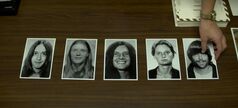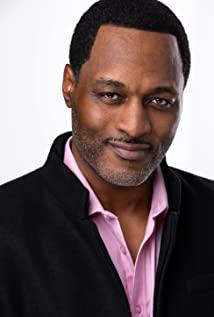We often refer to human nature in terms of being or not, more or less, as if it had a constant pattern. This is no wonder, after all, the "human nature" of most people is similar, so we are used to calling those who are different from us "inhuman". In fact, if we define human nature as some inherent characteristics of human beings, such as morality and values, then it must be fluid and diverse. Maybe even human nature is just a concept we make up - we don't have any human nature in common, only similar or distant traits.
I was reading "The Psychopath Test" at the same time as I was reading a book. The author is Jon Ronson, a journalist by profession, who interviews many scholars who study, treat psychopaths, and sociopaths, as well as people who are defined as psychopaths.
Through these interviews he discovered that in psychology a "psychopath" or "psychopath" is not the same as a mental illness -- a mental illness is like a cold, and with the right medicine, it may be cured or restored. And psychopaths can't. It's not a medical condition, it's more of a natural disability. They are born lacking certain abilities and cannot be cured. It is mentioned in the book that the most distinctive feature that defines a psychopath is the lack of empathy, that is, lack of empathy. It's not just compassion, it's the ability to feel empathy for other people's emotions and situations, whether happy or sad. So because they've never experienced guilt, when they kill, commit a crime, or cause pain to others, it's like we run over an ant, and it doesn't make a ripple in our hearts. They don't understand the emotions that ordinary people have, so they study us like guinea pigs in a research lab, and are very good at faking them. It's just that, unlike us, they can perform joys, sorrows and sorrows just right, in a wonderful way, just to achieve their goals.
There was an experiment in which normal people and psychopaths were shown pictures of inhumane dead bodies, such as dismembered, disfigured, etc., and the psychopaths hardly felt uncomfortable. They often even show intoxication and enjoyment, like ordinary people reading an intriguing novel. It was even found that physiologically, their brains were stimulated by these pictures in different ways than normal people.
The point of this book, however, is not really on the characteristics of a psychopath, but on how we decide whether to label someone as appalling as a "psychopath." The Psychopast Test mentioned in the title of the book is the Hare Psychopathy Checklist developed by criminal psychologist Robert Hare - an attempt to use a table to determine whether a person is a psychopath. And this table is often abused to restrict freedom of people who may have some degree of psychopathy but do not endanger others. This stems from our fear of such people, who call ourselves "ordinary people": they are indifferent to our scolding or influence, and we cannot change their nature, which is as ridiculous as persuading a beastly tiger to become a vegetarian. So we can only imprison them.
However, research shows that 1 in 100 people can be classified as a psychopath. And the percentage of CEOs or leaders at the top of the pyramid is much higher than the average, at 4 percent. This just proves that some characteristics of psychopaths are closely related to leadership ability, and whether empathy allows leaders to make the best judgment is controversial. Those of you who have seen the three-body problem should understand what I am talking about. (But then again, this must not be an excuse for Trump to build a wall)
So we'd rather kill them by mistake, never let them go, lock them all together or throw them on an island?
We don't have the answer yet, but in short, psychopaths are not black and white, but scaled magnitudes.
Back to "Mind Hunter", Holden fell into a kind of neurotic paranoia in the last few episodes. He thought he had seen through human nature. He began to categorize criminals and the people around him, trying to organize them like jelly beans of different colors. Put in your own labeled folder.
A psychological profiler is mentioned in the book "The Psychopath Test". At one point, he became famous for his predictable guesses about the perpetrators of multiple cases, and police lined up everywhere to ask him to help him do psychological profiling of cases that had no clue. In one case, a suspect was arrested and locked up for years because it matched too closely with what he described as a criminal's psychological profile. The real culprit, on the other hand, was on the loose, killing a few more people by the way.
History tells us that when we start trying to categorize complex human nature and ignore those gray spaces, it will eventually backfire.
Looking forward to the second season, I believe it will explore this.
**Amway Jon Ronson's TED talk https://www.ted.com/talks/jon_ronson_strange_answers_to_the_psychopath_test/
View more about Mindhunter reviews











